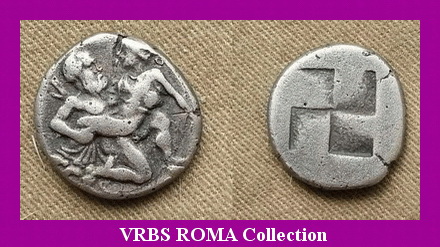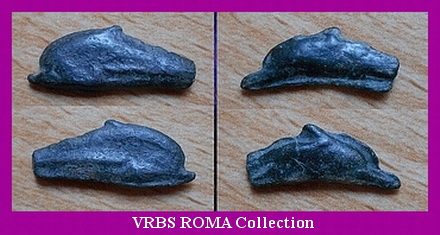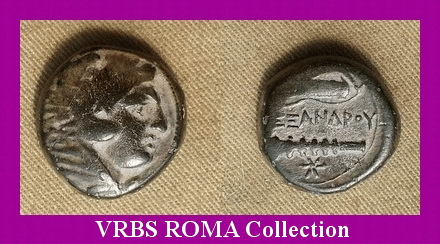|
|
|
When, where, how & why were
coins first made?
First published April 19, 2010
at Hubpages.com
Before I get started, let me define what I mean by a coin, and how coins
are generally made.
For a long time, lumps of copper, silver, gold, and electrum (Electrum
is a mined alloy of gold and silver used in many of the earliest
peak valued coins.) had been used for the buying and selling of goods and
services. These lumps were crudely shaped blobs of varying sizes with their
value invested in their mass. A coin, on the other hand, is a piece of
hard material, usually metal, that is standardized in weight, and above
all has the mark of the authority that produced it. The authority guarantees
the weight and purity of the coin.
By this definition, the first coins were produced around 700 to 650 BC
in Lydia (The West coast of what is now called Turkey). They were made
of a earlier mentioned and naturally occurring material called electrum.
It wasn’t long before natural electrum was replaced with a measured amount
of gold, silver or copper; each element alloyed for strength and durability,
and used for a coin of a given exchange value.
The first coins produced in Lydia were made using a lower die with a lion’s
head carved into it, a measured disk of hot electrum placed on that die,
and a second upper die with a square, squares, rectangles, or a combination
of these shapes carved into it to keep the hot metal blob/disk from moving
when being struck with a hammer; occasionally a second, or third strike.
As the force of the hammer impacts the upper die driving the lower die
against the hot electrum, the intaglio of lion’s face is pressed into
the soft, hot metal, secured from spinning by the lower die's square or
squares, (incuse) leaving a coin.

(15mm 3.06grms)
The Islands off of THRACE
Thasos. Circa 463-411 BC. AR Drachm
Obverse: Satyr carrying off protesting nymph
Reverse: Quadripartite incuse square.
SNG Copenhagen 1018.

(Left - 27X10mm 3.44grms)
(Right - 21X8mm 1.4grms)
SARMATIA, Olbia. Circa 5th-4th Century BC. Æ Cast
"Dolphin"
Above is an image of Vrbs Roma's oldest silver coin and copper proto-coin.
The silver coin, traditionally referred to as 'The Rape of the Nymph',
is now called 'Satire running off with nymph'; running with his knee planted
on the ground; transmogrified by political correctness. While showing the
art on the obverse, it also shows the, in this case squares, use in the
lower die to hold it in place during the impact of the hammer.
The copper proto-coins was cast.
Mean while in China; 'The Middle Kingdom':
On the other side of the planet, in China, coins may well have been produced
before this time, but, in China, coins were cast rather than hammered.
Hammering coins with the use of dies didn’t occur until 1918. Another
interesting thing about the coins made in China is that for the most part
the Chinese only made what could be called a penny. Occasionally,
there were short periods when coins were made that were worth 5 cash and
more.
Another interesting point is that Chinese coins all have a hole through
the center. Long ropes of coins were wheeled in wagons and carts
from one person and place to another in order to finalize a deal.
This slowed business to a manageable speed; which was convenient for the
ruling class.
Back to Europe:
It wasn’t until late in the 4th century BC that images were used on the
reverse side of coins. The upper die, planchet, and lower die are being
used today to make the coins we see, and spend today.
Now let’s look at the ‘why’. Why were coins made, and what did they
offer? The obvious answer is to stimulate business, standardize values,
and centralize control. Coins represented a known value that people could
rely on when letting loose of their goods or providing their services.
This, however, was only the beginning. The world was revolutionized with
the advent of coins. Gambling was made easier. It’s no surprise that
dice were invented in Lydia at around the same time as coins. Prostitution
became a way for women to acquire the wealth needed to have a say in the
choosing of their husband. This is no small thing. Women were completely
owned and controlled by their men. Being able to put money away without
their controller’s knowledge gave them the possibility of a power known
only to those women born to power and wealth. And for the farmers: Crops
were too perishable to be kept as wealth. Farmers could change their crops
into a durable and easily negotiable form of wealth that would be there
long after their crops were sold, eaten, or spoiled. But probably the most
important of all the changes |
|
Articles
By: Anthony Ballatore
Roman Emperors & their Coins
0)
Ancient Roman Coins On Ebay
1)
When, where & why were coins first made?
2)
The Story of Romulus and Remus & The Birth of Rome
3)
The Roman Republic
4)
Julius Caesar and the Death of the Republic
5)
Augustus Caesar: The First Roman Emperor
6)
Tiberius Caesar: The First Julio-Claudian Heir
7)
Caligula: The first really crazy Caesar
8) Claudius: A level headed Caesar?
9) Nero: The Last Julio-Claudian Heir
|
|
Websites worth knowing:
WildWinds.com
By far the single best location for identifying, evaluating, and touring
ancient coins. This link will direct you to their seach engines. Enjoy.
ForumAncientCoins.com
Along with WildWinds, this is a site of the highest regard, accurate
information, and ethical policies; 'AUTHENTICITY GUARANTEED FOR ETERNITY'
says it all.
FSRCoins.com
Frank S. Robinson is a unique individual. I have more respect for Mr.
Robinson than any other coin dealer. His book 'The Case for Rational
Optimism' (2009) will most likely leave you with this same perspective.
If his book doesn't, dealing with him will. He is often mistaken for Neil
Armstrong. :-)
Harlan
J. Berk, Ltd.
Located in Chicago, Harlan J. Berk, Ltd. is an excellent location for
both common and rare coins; often of
museum quality.
Rg.ancients.info
Reid Goldsborough's web pages are well written, educational, the first
site to read regarding counterfiet coins. This site is hosted for free
by VCoins.
VCoins.com
A commercial coin and information site established December 3, 1998.
Their code of ethics and years of operation speaks loudly.
DirtyOldCoins.com
Another commercial coin and information site.
ThePenAndQuill.com
One of our sites dedicated to pens, ink, quills, books, writing, reading,
history, and anything else that envolves language, art, and ideas.
|
coins brought about is the relationship of wealth to
power. War was revolutionized. Taxation morphed.
Alexander III (Alexander the Great) for instance. Taking skilled die cutters
and coin makers along with his troops allowed Alexander to change all the
copper, silver and gold taken from the people he conquered into coins.
These coins would in turn be used to hire soldiers, feed soldiers, and
arm them in order to conquer the next city filled with copper, silver and
gold to be made into coins/wealth/power to increase the size of his army.
This is one reason that coins made by Alexander are so plentiful today.
As Alexander moved from city to city, people were conquered, food was acquired,
soldiers were drafted, and metal was made into coins that in turn changed
those drafted soldiers into loyal soldiers; soldiers eager to get to the
next city and change metal into coins and wealth.

(17/16mm 7.55grms)
Alexander the Great (20/21 July 356 BC – 10/11
June 323 BC), AE, Marium Mint, Cyprus
Obverse: Head of Alexander as Hercules right wearing
lion skin.
Reverse: ALEXANDPOY (Greek spelling of Alexander)
Bow and quiver above, club and thunderbolt symbol below.
Price - cf. 3115 for a tetradrachm with similar obverse
style and the same symbol.
A Catalog of Coins of Cyprus, pg. 39 #10
Above is a typical coin made under the rule of Alexander III. This coin
was made of bronze, and, as with most of Alexander’s coins, shows him
as Hercules on the obverse, and on the reverse are the weapons of Hercules:
club, bow, and quiver of arrows. It wasn’t until the time of Julius Caesar
that portraits of actual living individuals were placed on coins.
This leads us closer to the coins of the Roman Empire and the stories of
the individual who had their impact creating and maintaining that empire.
Coins secured power, wealth, and, in some cases, a type of immortality.
During the Roman Republic, coins of silver and gold could only be made
by moneyers. Moneyers were people appointed by the Senate from the wealthy
and powerful class in Rome. Being a moneyers allowed individuals to promote
themselves and their families. If you look at the coins produced around
the time of Julius Caesar’s assassination, you will see the names of
many of the assassins, you will see the names of those who hunted down
those assassins, and you will see coins proclaiming the legitimacy of the
assassination.
With the Roman Republic’s fall and the birth of an Imperial Rome, coins
represented a world wide propaganda platform. |
|
|